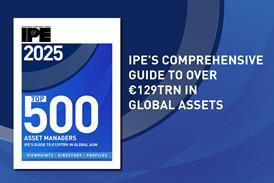Down to earth approach
The electricity sector in Spain is among the industries that historically have always provided a benefit to complement the social security pension system for their employees, and Unión Eléctrica Fenosa is no exception. Until 1993, the company itself was responsible for looking after this complementary benefit which was provided directly ...
You have now reached your article limit
Already a registered user or member? Sign in here
To continue reading, register free today for access
Registration also includes access to

Five reasons to register today
- Access to IPE articles from our award-winning editorial team
- Unique IPE market data, rankings and tables
- In-depth interviews with pension fund leaders
- Extensive coverage of latest asset class trends
- Comprehensive archive of data, research and intelligence








